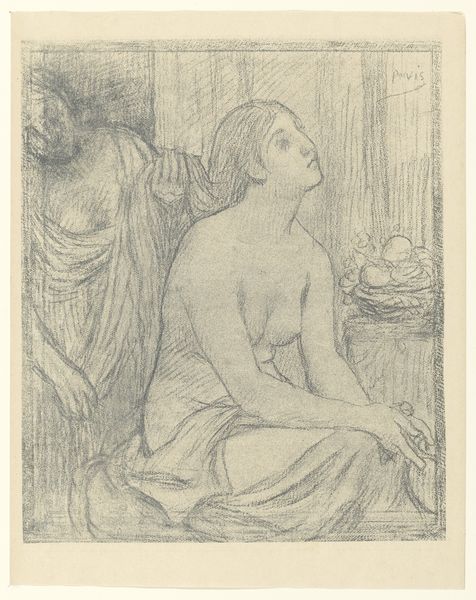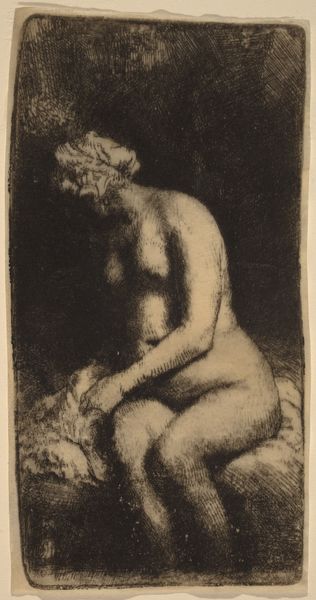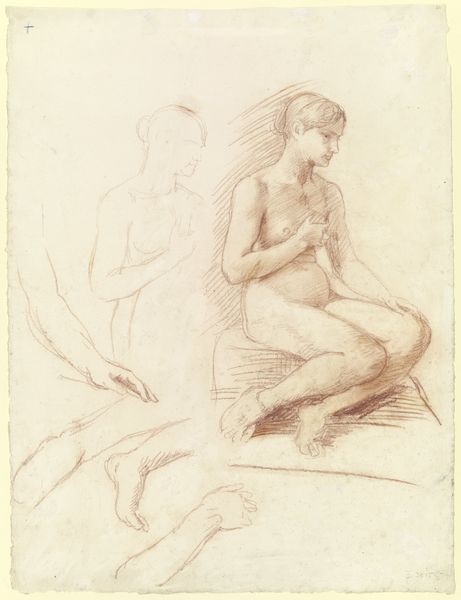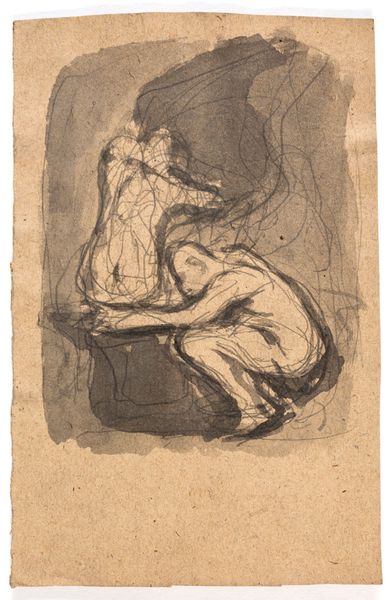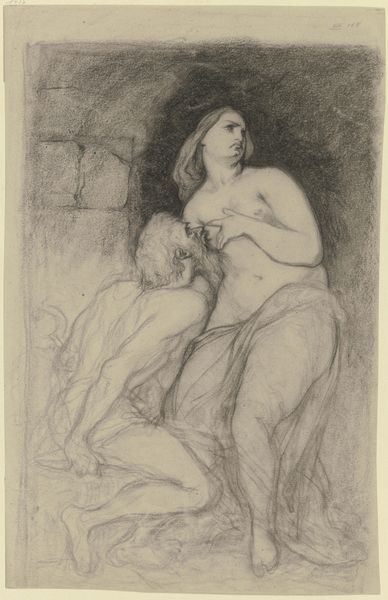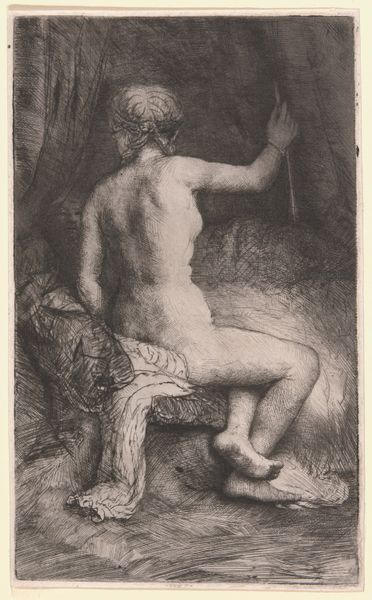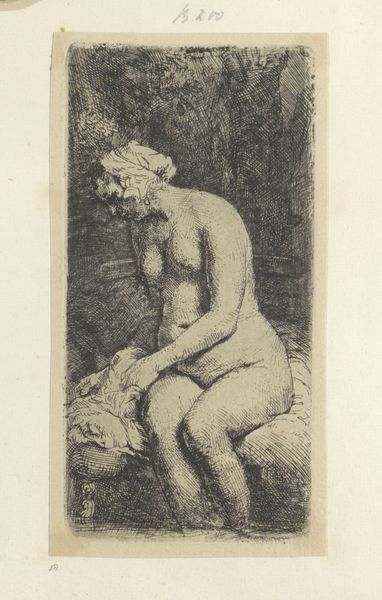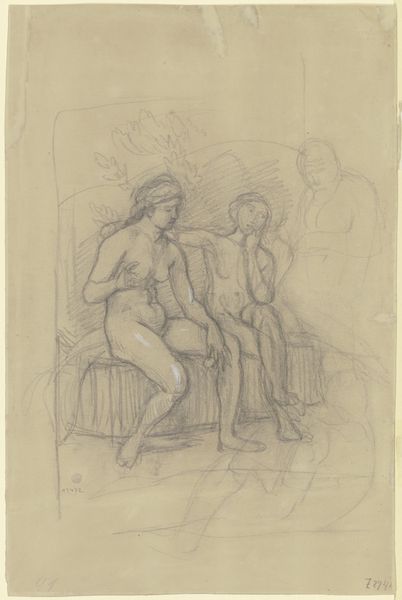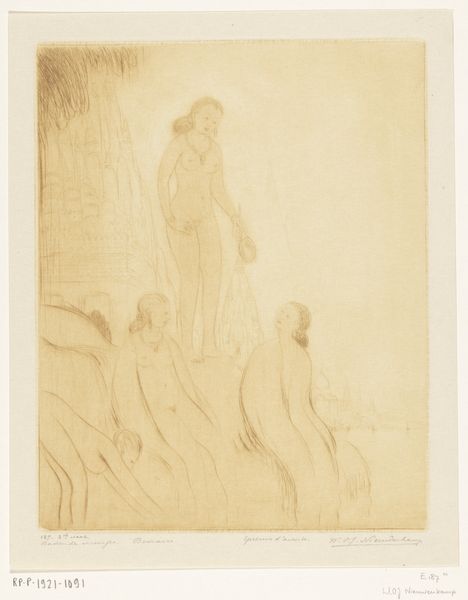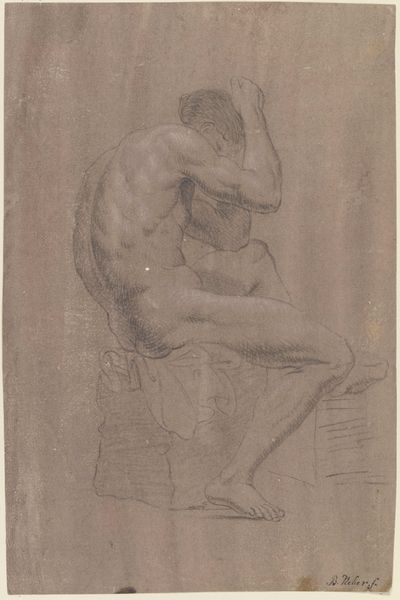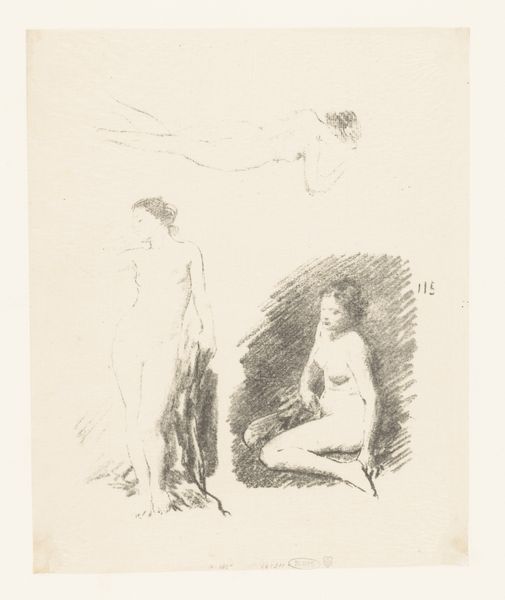
drawing, paper, chalk, charcoal
#
portrait
#
pencil drawn
#
drawing
#
16_19th-century
#
charcoal drawing
#
figuration
#
paper
#
german
#
pencil drawing
#
chalk
#
symbolism
#
portrait drawing
#
charcoal
Copyright: Public Domain
Otto Scholderer's "Allegorical Depiction," held at the Städel Museum, presents us with a kneeling figure, bare and vulnerable, reaching towards an ethereal, draped form. This gesture of supplication is not new; it echoes through centuries of art, from ancient votive offerings to Renaissance depictions of saints and sinners. Consider the raised hands, the exposed body—these are primal expressions of need and reverence. The act of kneeling itself is loaded with meaning. Think of the countless images of prayer and submission throughout history, from pharaohs to humble farmers. This posture speaks to our deep-seated awareness of forces beyond our control. In psychological terms, it’s an acknowledgment of the self in relation to something greater, a surrender to the mysteries of existence. The draped figure in Scholderer's work also resonates with various traditions. Is it a spirit, a muse, or perhaps a figment of the kneeling figure’s own psyche? Regardless, this symbol continues its timeless journey through our collective consciousness, evolving with each new interpretation, and reminding us of the enduring human search for meaning and connection.
Comments
No comments
Be the first to comment and join the conversation on the ultimate creative platform.
